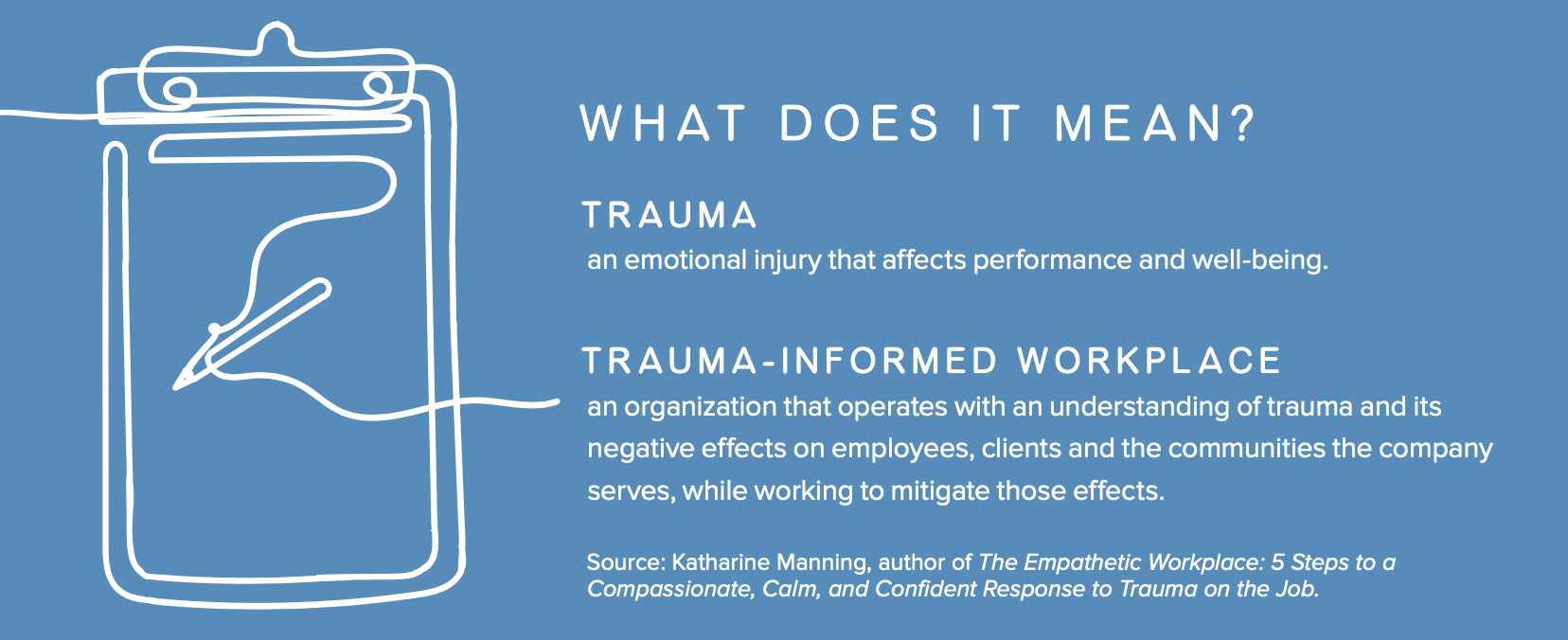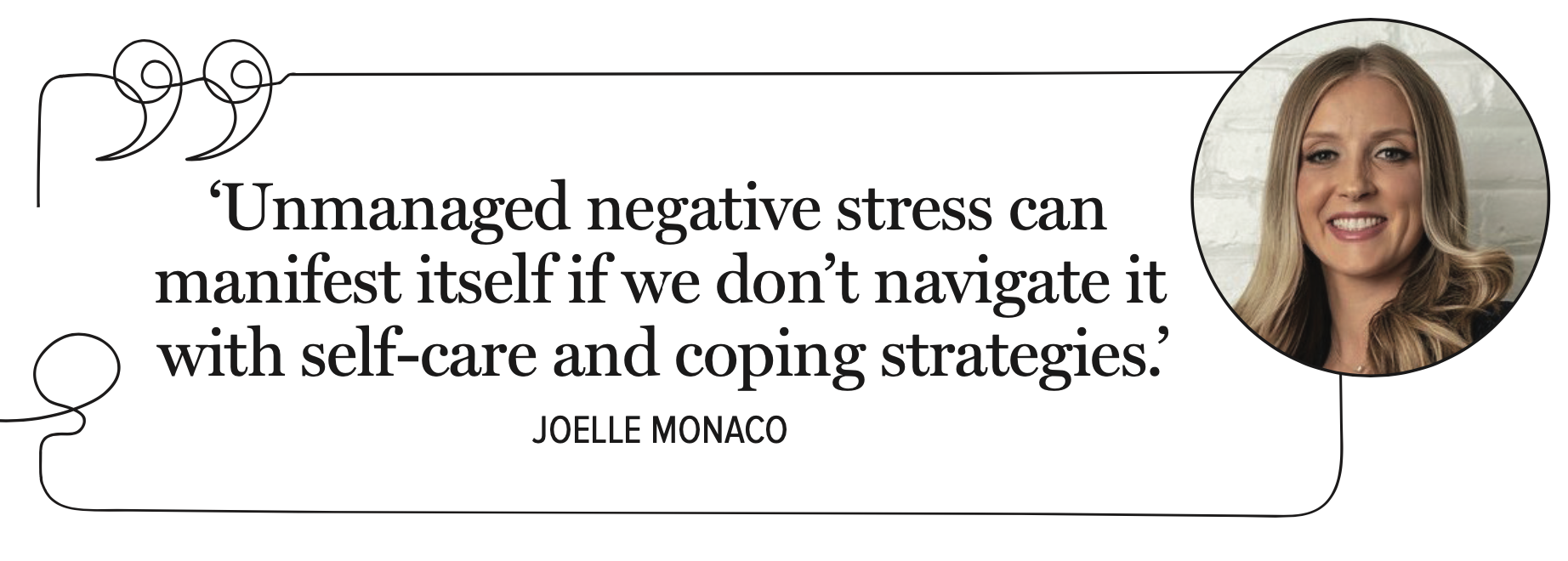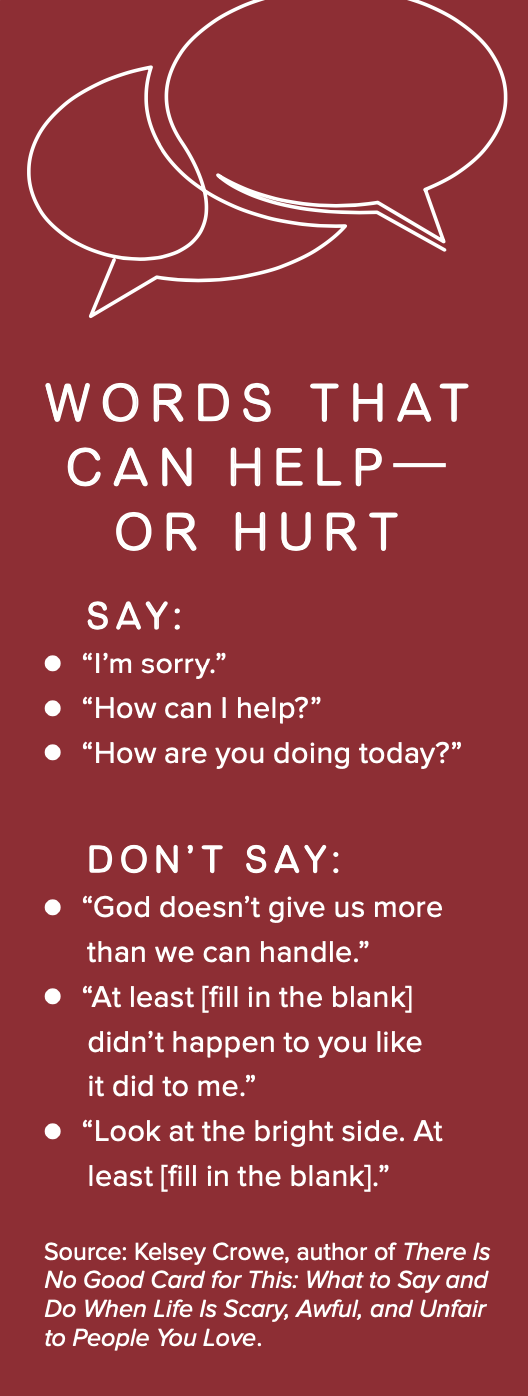
?As the July Fourth parade stepped off in Highland Park, Ill., last year, police officers marched near the front with their very own grand marshal—Vinny Duke, a therapy dog. Firefighters and their family members accompanied a vintage hook-and-ladder truck.
Residents, from young children to grandparents, lined the parade route in the Chicago suburb, reveling in the city’s first Independence Day parade since before the pandemic.
Then shots rang out from a rooftop and bullets rained down on young and old, killing seven people and wounding dozens more.
As the crowd fled frantically toward safety, Highland Park’s first responders sprang into action, tracking down the shooter and processing the grisly crime scene.
“Most [first responders] had to leave their families and immediately transition to response,” says the city’s HR manager, Emily Taub, SHRM-SCP. “They did what was needed to be done before they could check in [with their families].”
Taub, filling in for a colleague who was on vacation, was thrust into leading logistics at the emergency operations center while also providing HR support to the town’s 250 employees, especially those first responders.
In addition to juggling nuts-and-bolts tasks such as stocking the emergency center with toilet paper for the influx of staff, she and other leaders kept city employees updated with information during the manhunt and let them know that none of their colleagues had been injured. Taub also called in the 100 Club of Illinois, a group that offers support for first responders.
Between the 100 Club and the city’s employee assistance program (EAP), Taub had mental health counselors available within hours, including two counselors trained specifically in dealing with trauma. In the ensuing days, small groups, such as shifts of firefighters, could talk through what happened, guided by experts.

Taub’s job was hardly done after that day. She has worked for months to help employees through the aftermath.
Her work didn’t start that day, either. She had laid the groundwork earlier by rolling out training programs—including active-shooter awareness for the entire city staff—and engaging in culture-building efforts.
Many traumatic events don’t make national headlines as they did in Highland Park and Chesapeake, Va., where a Walmart manager opened fire on colleagues last November. Plenty of other less-obvious cases of trauma, including car accidents, medical diagnoses, domestic violence and deaths from natural causes, regularly affect those in the workplace.
Fortunately, HR professionals can help by being trained to provide quick and sensitive responses when employees face such life-altering events.
“Because of the nature of our work and where we sit in organizations, it will be something HR professionals will have to deal with in their careers,” says Rebecca Edwards, SHRM-SCP, CEO of Infinite HR, a Charlotte, N.C.-based consultancy. “We have to be that Rock of Gibraltar when something happens.”
HR has successfully pushed to become a strategic partner in the C-suite, but practitioners need to remember what the “H” in “HR” stands for, says Crystal Whittenton, SHRM-CP, HR director at Southern Outdoor Restoration in Raleigh, N.C.
“People are not spreadsheets,” Whittenton says. “If you lose track of the fact they are humans, the strategy won’t matter.”
Provide Training
Given the ubiquity of trauma in the world, some experts are calling on employers to develop “trauma-informed” workplaces. As a result, a number of training programs have popped up to help organizations through the storms.
Joelle Monaco, an organizational development consultant in Albany, N.Y., for instance, offers mental health first aid training for public and private organizations. Instead of medical triage skills, she teaches staffers how to handle traumatic events and other difficult situations.
“We’re more likely to come across someone with mental health or behavioral challenges than someone choking,” Monaco says.
The aftereffects of trauma can lead to self-doubt and an inability to solve problems.
“Unmanaged negative stress can manifest itself if we don’t navigate it with self-care and coping strategies,” Monaco says.
The training she provides teaches leaders and managers to recognize signs of emotional distress in employees and then connect them with care services.
Kelsey Crowe runs Empathy Bootcamp of San Francisco. At her training sessions, she offers an “empathy menu” of things to say and do—along with what to avoid.
The work environment makes what’s already difficult—knowing how to approach someone going through a crisis—even more complicated. Colleagues who don’t know someone well should break through their reticence if they have useful guidance to share, especially from a similar experience, she says. And those who are close to a co-worker going through a difficult time should get past any worries that saying “I’m sorry” isn’t enough.

But expressing concern shouldn’t be a public performance in the middle of a meeting, she notes. Colleagues also can choose a gesture when words fail them.
“There are so many different ways to show you care, like a doughnut on their desk when they come back from divorce court,” says Crowe, author of There Is No Good Card for This: What to Say and Do When Life Is Scary, Awful, and Unfair to People You Love (HarperOne, 2017).
Crowe’s menu of empathy gestures also includes offering to take someone out for lunch, pooling vacation time to donate to a colleague, offering to pick up work slack for someone distracted by trauma or organizing a fundraiser for a colleague’s favorite charity.
For her book, Crowe surveyed 2,500 people going through trauma, and most said too few people reached out to them.
“If I were to choose between too much care and too little, too little is awful,” Crowe says. “People start to feel like a pariah and everyone is avoiding them.”
Plan a Response
Whatever the traumatic event is, HR needs an action plan, which can include bringing in EAP resources and local government mental health professionals to develop a long-term agenda to deal with the aftermath. Immediate needs can include sharing a list of providers who are taking new patients and arranging group discussions facilitated by a mental health professional, Monaco says.
Not all team members will want help immediately; some will need more time before they’re ready to seek mental health treatment, she adds.
Taub says that after the parade shooting, she made sure to get the message out that there was “no right way to feel.” Highland Park’s municipal employees are spread across various buildings throughout the city, and Taub and her staff visited each one—a practice she had established before the tragedy as a way to get to know workers through “HR office hours” at their worksites.
“We know there are a number of individuals who are having a difficult time,” Taub says. “We want to make sure we are best positioning our employees to serve the community. They can’t do that if they don’t have the support they need.”
To that end, the city extended funding for employee mental health benefits so they would be completely covered at least through the end of 2022.
Katharine Manning, whose Chevy Chase, Md.-based company, Blackbird LLC, offers training and consulting on how to create empathy in the workplace, recommends employers adopt a “LASER” approach:
- Listen to the feelings of workers.
- Acknowledge the difficulty.
- Share information about what happened and the process for dealing with it.
- Empower people with resources.
- Return to the issue instead of just dropping it.
Employees also need to learn to accept help, Taub says. Giving staffers time to decompress and process the tragedy was especially hard when they were working long hours on tasks such as securing the crime scene. Nearby police and fire departments came in to cover some shifts.
“Our inclination is to say, ‘We’re OK; we can handle it,’ ” Taub says. “We were not OK.”
Clarify Benefits
HR’s role in relaying benefits information can be crucial for those hit with a terminal diagnosis, catastrophic injury or other major trauma. Start by periodically refreshing workers’ memories as to what benefits are available, Monaco says.
“HR people say, ‘No one uses our EAP,’ ” she says. “I say, ‘How often do you market it?’ ”
Monaco suggests creating and sharing short videos on what resources are available. Employers can also bring in an insurance carrier representative to talk about mental health benefits.
Getting the word out, particularly after a tragedy, often requires repetition, says Manning, author of The Empathetic Workplace: 5 Steps to a Compassionate, Calm, and Confident Response to Trauma on the Job (HarperCollins, 2021).
“When people are experiencing trauma and distress, it’s hard to process information,” Manning advises. “So make sure you’re speaking in short, clear sentences and repeat yourself a lot. It could be the first three times you mention the EAP, it goes over their heads. But the fourth time, it clicks.”
That’s especially true when someone receives a terminal diagnosis.
“We’re trying to explain FMLA [the Family and Medical Leave Act], but the person in front of us is coming to terms with what they just learned,” Edwards says. “It’s more than managing paperwork. Understand what’s happening internally with the person sitting in front of you.”
Edwards suggests putting the information in writing and encouraging the impacted employee to bring someone with them to a meeting with human resources. HR leaders need to make sure their staff is well-trained on available resources, she says, so they can best advise families. For instance, many life insurance policies include funeral planning services.
Don’t Forget About Self-Care
When HR professionals and managers offer help to workers, it’s important to make sure their own mental health doesn’t suffer. Sometimes, the experience of working closely with trauma victims can be too much.
“Managers are not therapists, and you don’t want them to be,” Manning says. “The manager is like the first responder: You provide immediate support and refer them on to the experts.”
Edwards advises building in time for decompression for HR staff who are dealing with traumatized employees, such as offering paid time off or temporarily shifting duties away from them.
“Whenever you are dealing with trauma, there’s a transfer of energy,” Edwards says. “They are going to feel that as a human, even when it’s not happening to them.”

Be Sensitive
HR can help with communications when something goes wrong. Edwards was working in government years ago when co-workers planned a baby shower for a colleague. After the baby died during birth, the employee “was terrified of coming back and having to relive this over and over with co-workers,” Edwards says. HR professionals worked to find a solution, which was sharing the sad news with her colleagues before she returned to work and alerting them that she didn’t want to discuss it.
Too often, managers assume they should be the ones relaying information about what an employee is going through. But they’re not always the best choice—especially if the worker doesn’t like their boss. HR should ask the employee who they would like to communicate any information they want shared with colleagues.

Crowe says HR practitioners and managers should be sensitive to what they say to those struggling with a traumatic experience, and that means understanding that their own listening skills might need improvement. Don’t minimize what the person is feeling or try to dictate what the individual should do, she advises.
A better approach, Crowe says, is to ask, “How are you doing today?” It’s more manageable and specific to answer.
Taub learned that employees need to lean on each other after trauma, but the bonds between them need to be built beforehand.
“It’s doing what you say, always being willing to assist in your day-to-day work, so in a time of crisis your co-workers know they can count on you and you can count on them,” Taub says.
When crises are handled well, it can help build that sort of culture. Whittenton’s company, which offers pressure-washing services, was rocked when a popular young manager, Marcel Burns Jr., was hit head-on while driving to the gym in the summer of 2020.
His colleagues were devastated, but they couldn’t visit him in the hospital or even deliver meals to his wife and young children because of safety protocols during the pandemic.
“This is a guy who the weekend before was taking his boy fishing and at the height of his physical abilities,” Whittenton says.
Despite having a leg amputated and becoming a quadriplegic, Burns kept up a positive attitude.
The company responded in a way that many small businesses might not be able to afford and larger ones might be reluctant to adopt out of concern that it might set an expensive precedent. But Whittenton says the owners never blanched at doing the right thing.
Southern Outdoor Restoration kept Burns on the payroll long after he became unable to work. The company sent teams of employees to Atlanta during his rehabilitation to wave signs outside his room during the lockdown. And after he went home, employees showed up to decorate his house for Christmas 2021 and deliver presents for his children. Although there wasn’t an existing policy for it, the owners allowed employees to donate their paid time off to him. They even paid for a video greeting from his favorite football player, Lawrence Taylor, and paired it with video well-wishes from co-workers.
“It solidified the culture and team feeling” at the company, Whittenton says. “People saw we weren’t just pretending to care.”
Sadly, Burns had a setback and died in late 2021.
“It was like the rug was pulled out,” Whittenton says of the reactions from the company’s employees.
Company leaders put a lot of thought into how replacing Burns would affect the employees he had supervised. They intentionally hired someone with a different personality, Whittenton says.
Strengthening Ties
Handling trauma well can help companies avoid problems in the workplace and preserve their talent pool and productivity.
The American Psychological Association’s 2022 Work and Well-being Survey showed that 81 percent of those asked say mental health support is an important consideration when they look for a job.
“People are starting to value their life and well-being,” Monaco says. “Businesses that don’t value their employees as people are quickly going to see their talent pool dwindle.”
And workers going through trauma can experience “presenteeism,” which is defined as decreased productivity, while they recover from the situation.
“They are going through the motions,” Monaco says.
Employees have been under a lot of stress in recent years. The pandemic meant people lost loved ones, felt isolated working from home and lived in fear of contracting a potentially deadly disease. Repeated incidents of police brutality against people of color brought an additional layer of trauma.
Some employees’ problems spill over onto their colleagues, Manning says, such as an abused woman leaving meetings abruptly when her abuser demands she take his calls or a troubled employee verbally lashing out at colleagues. Proactively addressing the issue with employees can head off lawsuits, negative publicity and other problems.
“It’s better if you can learn to manage this while the costs are still the quiet ones,” Manning says.
Handling trauma well can help bind employees and their organizations, as Whittenton and Taub found.
“The way we show up for each other in moments of trauma has a lasting impact on individual healing, trust between colleagues and on the person in trauma’s trust in the organization,” Manning says.
She recalls a friend who worked for BP when the company was addressing an oil spill. Despite the work pressures, her boss insisted she take time off to be with her dying father. That caring approach left her feeling like she would walk through fire for that leader, Manning says.
HR can coach managers on ways to help, which can boost both loyalty and productivity.
“When you’re in grief, you can stare at a spreadsheet for eight hours” without getting anything done, Crowe says.
A remedy is for managers to instill confidence by reminding the employee of their past hard work and accomplishments and offering time off if needed.
“When somebody receives an empathetic response, it can help improve someone’s focus,” Crowe says.
Although the impact of trauma and the best way to handle it can vary widely, there’s always a way for HR to help.
“Look to the individuals and what they need,” Whittenton says. “It doesn’t matter what happened; you can always start there.”
Tamara Lytle is a freelance writer based in the Washington, D.C., area.
Photograph by Brian Cassella / Tribune News Service.

